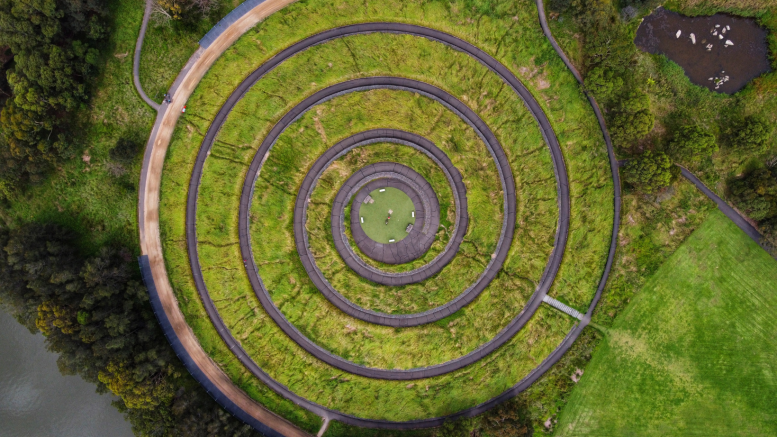What if every factory, farm, brewery, data center, and food processor…
didn’t create waste at all?
What if the heat, water, chemicals, byproducts, and leftover materials from one business
became the raw materials for another?
What if regional industries functioned like a forest —
where everything circulates, nothing is wasted,
and every output becomes someone else’s input?
Today on Mobilized News, we’re flipping the script from isolated industries
to industrial symbiosis —
the regenerative networks where entire regions operate like ecosystems.
The Problem: Isolated Industries = Wasted Resources
Right now, industries operate like separate islands:
- Factories create excess heat and dump it
- Breweries generate spent grain that rots
- Power plants release steam and warm water
- Food processors discard nutrient-rich waste
- Cities burn or landfill valuable materials
This creates:
- Pollution
- Higher emissions
- Lost economic value
- Wasted materials
- High operating costs
We treat resources as disposable —
because we built systems that aren’t connected.
But nature is fully connected.
And industry can be too.
2. The Flip — Regional Ecosystems That Circulate Everything
Industrial symbiosis creates closed loops between industries.
Instead of waste, we get:
- Inputs
- Feedstock
- Energy
- Water
- Heat
- Biomaterials
- Fertilizer
- Local jobs
Businesses cooperate instead of compete for resources.
Let’s explore what this looks like.
Real Examples — Industrial Symbiosis in Action
Kalundborg Symbiosis — Denmark (The Pioneer Model)
The world’s best-known industrial symbiosis network.
- Surplus heat from a power plant warms 3,500 homes
- Steam powers pharmaceutical factories
- Gypsum from flue gas becomes wallboard
- Water is recycled across multiple industries
- Nutrient-rich sludge becomes fertilizer for farms
Zero waste. Lower costs. Regional prosperity.
Breweries + Mushroom Farms — U.S., Canada, Kenya
Spent grain from breweries feeds mushroom farms:
- Mushrooms grow on brewery waste
- After harvesting, leftover substrate becomes compost
- Farms return compost to local growers
Beer → mushrooms → soil → food.
A circular loop that strengthens local economies.
Aquaculture + Greenhouses — Netherlands
Fish farms release nutrient-rich water.
Greenhouses use it to grow tomatoes, cucumbers, and greens.
- Fish waste → fertilizer
- Greenhouses clean the water
- Clean water returns to fish tanks
Two industries become one ecosystem.
Example 4: Data Centers + Urban Heating — Sweden & Finland
Data centers produce huge amounts of heat.
Cities pipe it into:
- District heating networks
- Public housing
- Industrial facilities
Tech waste becomes community warmth.
Sugarcane Waste → Bioplastics — Brazil
Agro-waste from sugarcane mills becomes:
- Bioplastics
- Sustainable packaging
- Animal feed
- Bioenergy
Entire waste streams become new industries.
Eco-Industrial Parks — China
China has over 100 eco-industrial zones where:
- Factories share water
- Chemicals are recaptured
- Heat is reused across buildings
- By-products become feedstocks for neighboring plants
Cities become circular manufacturing hubs.
Food Waste → Biogas → Farm Fertilizer — Germany
Communities turn food scraps into:
- Renewable heat
- Electricity
- Fertilizer pellets for farmers
Energy + soil health + waste reduction = a perfect loop.
Why Industrial Symbiosis Matters
Massive Emissions Reductions
When industries share heat, water, and materials,
carbon footprints shrink dramatically.
Economic Efficiency
Businesses save money through:
- Lower waste management costs
- Shared infrastructure
- Local resource loops
Local Job Creation
Regional symbiosis supports:
- New recycling industries
- Biomaterial startups
- Green construction
- Circular economy roles
Environmental Regeneration
Less pollution.
Less extraction.
More local resource sovereignty.
Community Resilience
Regions become less vulnerable to:
- Global supply chain shocks
- Resource instability
- Energy disruptions
What Communities Can Do Now
1. Map local waste streams as potential resources.
“What is leaving your region that could be used by someone else?”
2. Build local eco-industrial hubs.
Co-locate businesses that can share heat, water, and materials.
3. Support community biogas and compost operations.
Turn waste into energy and fertilizer.
4. Incentivize companies to share resources.
Policy can unlock cooperation.
5. Help small businesses adopt symbiosis partnerships.
Breweries → farms.
Restaurants → compost hubs.
Manufacturers → reuse networks.
6. Educate local governments on the economic benefits.
Savings + jobs + resilience = win-win.
The Big Shift
Industrial symbiosis flips the script from:
“How do we manage waste?”
to
“How do we design systems where waste doesn’t exist?”
Because in a regenerative economy:
- Waste becomes value
- Industries become ecosystems
- Regions become resilient
- Communities become co-creators of prosperity
Nature wastes nothing —
and neither should we.
That’s how we flip the script —
from isolated industries that pollute
to interconnected systems that regenerate.
